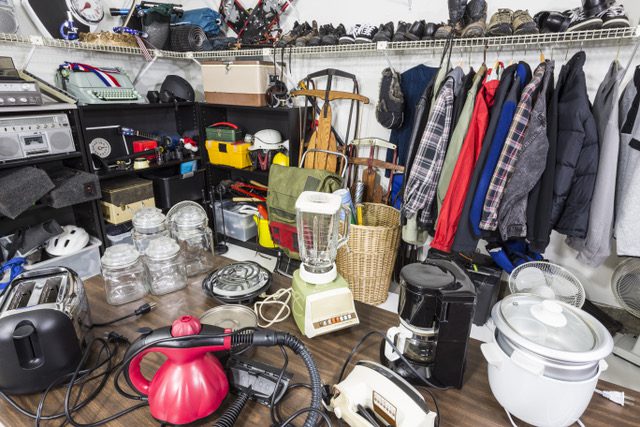Most everyone has some clutter to an extent, such as a pile of mail or too many plastic food containers. That is normal. When too many things disrupt our every day lives, that is when we need to consider whether it is clutter or a psychological disorder that leads to hoarding.
When is it clutter and when is it hoarding?
The definition of clutter is things that accumulate in our living space. Most often those things are related to the living space, such as food containers in the kitchen or magazines in the family room. Clutter can be very unsightly but most of the living areas can still be used for their intended purpose.
Hoarding occurs when possessions are accumulated to the point that the room can no longer be used for its intended purpose. If someone has to sleep in a chair because their bed has a deep pile of things that is a tell tale sign of a hoarder. Another sign is a narrow passageway in a home because there are piles of stuff along the wall. The solution to hoarding is not simply cleaning the home. It is a psychological disorder and the hoarder will fill up a clean home fairly quickly.
How is clutter and hoarding related to aging?
Increased clutter in older adults is due to many factors including: decreased mobility, depression (including grieving a loved one), inheriting too many possessions from those who have died and dementia. Once you uncover the root cause of clutter, then you can solve the problem. People who have clutter most times welcome the decluttering assistance.
An older adult who is a hoarder was likely a young hoarder. Except for brain abnormalities (stroke, brain cancer or dementia among others) hoarding behaviors begin earlier in life. A hoarder’s behavior may become worse as they age because of limited mobility, brain abnormalities, etc.
What is the solution?
The first step toward a solution is to recognize whether there is a change in how the person keeps their living space. In other words, a baseline needs to be established. If someone who kept a very clean home now has piles everywhere, they could have a problem such as dementia. Conversely, if someone always had clutter around and still does, there is no problem.
If you want to help alleviate a cluttered home, do not do so without the person’s permission and by in. It is disrespectful to barge into someone’s home and tell them how to live. A person with dementia may not understand why you are throwing out things they believe are valuable. Unless the situation is dangerous, you will have to leave the decluttering for when that person moves out. I know this will not make you feel good, but forcing someone to declutter will make that person feel worse.
If you notice the individual is not using certain rooms because of the level of clutter, that is a sign of hoarding. Hoarding Disorder is a clinical mental health problem. The first step is to visit your primary health care provider to rule out brain disorders. If no medical issues are found, then a psychiatrist needs to be consulted. Calling in a junk hauling service will fix the immediate problem but not solve the problem. Only psychiatric care can solve the root problem of hoarding.
Conclusion
The first step is to determine what is normal for that individual. If there is an extreme change, then a health care provider needs to be consulted to rule out any medical issues. A psychiatric consult would be the next step. Once a root cause is found, you need permission from the person to proceed. It is, after all, their home.

